Hubble Spots A Secluded Starburst Galaxy : This Image, Taken By The NASA/ESA Hubble Space Telescopes

Hubble Spots a Secluded Starburst Galaxy : This image, taken by the NASA/ESA Hubble Space Telescopes Advanced Camera for Surveys
js
More Posts from Littlecadet-biguniverse and Others
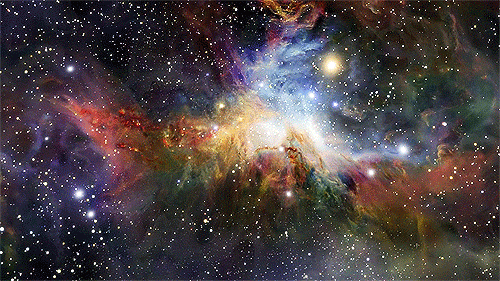
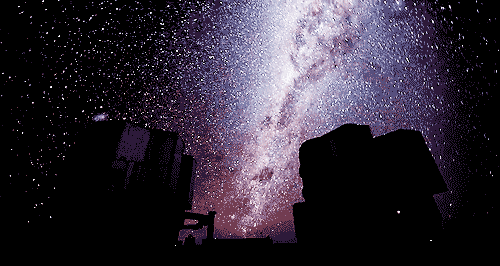
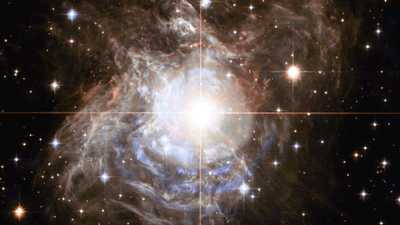
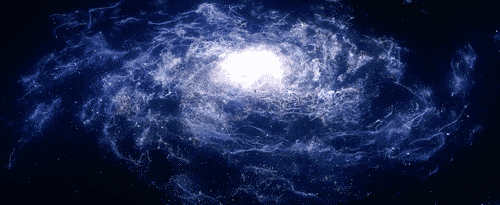
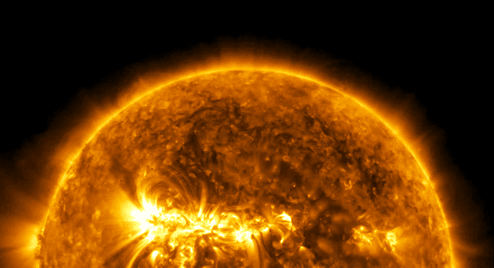
“Every one of us is, in the cosmic perspective, precious. If a human disagrees with you, let them live. In a hundred billion galaxies, you will not find another.” ~ Carl Sagan, Cosmos

Panorama from the Apollo 15 mission


Top: Hubble’s infrared vision pierced the dusty heart of our Milky Way galaxy to reveal more than half a million stars at its core. At the very hub of our galaxy, this star cluster surrounds the Milky Way’s central supermassive black hole, which is about 4 million times the mass of our sun.
Credits: NASA, ESA, and Hubble Heritage Team (STScI/AURA, Acknowledgment: T. Do, A.Ghez (UCLA), V. Bajaj (STScI)
Bottom: This annotated, infrared image from the Hubble Space Telescope shows the scale of the galactic core. The galaxy’s nucleus (marked) is home to a central, supermassive black hole called Sagittarius A-star.
Credits: NASA, ESA, and the Hubble Heritage Team (STScI/AURA) Acknowledgment: T. Do, A.Ghez (UCLA),V. Bajaj (STScI)

Astronomers just discovered the most distant galaxy cluster ever seen
Scientists managed to spot a cluster of galaxies 11.1 billion light-years away. That’s almost an inconceivable distance when you consider that one light-year is roughly 6 trillion miles. The discovery is important because it reveals new information about the actual time when galaxy clusters started forming.
Follow @the-future-now

The Running Chicken Nebula.
Image Credit & Copyright: Andrew Campbell

Expedition 48 Crew Preparing to Return Home via NASA http://ift.tt/2bV7T75

The Sunflower Galaxy

TODAY IN HISTORY: On July 31, 1971, moonwalker Jim Irwin works at the lunar rover the first EVA of the Apollo 15 mission. In the background is Mount Hadley. Photo by Dave Scott. (NASA)

Enceladus, the sixth-largest moon of Saturn
js
-
 nouranmsalah reblogged this · 3 years ago
nouranmsalah reblogged this · 3 years ago -
 nouranmsalah liked this · 3 years ago
nouranmsalah liked this · 3 years ago -
 alazebyar liked this · 6 years ago
alazebyar liked this · 6 years ago -
 michael-rocket liked this · 6 years ago
michael-rocket liked this · 6 years ago -
 wallymcflubberfins liked this · 6 years ago
wallymcflubberfins liked this · 6 years ago -
 sightiffick liked this · 6 years ago
sightiffick liked this · 6 years ago -
 spacefrog23 liked this · 6 years ago
spacefrog23 liked this · 6 years ago -
 colleen77043 liked this · 6 years ago
colleen77043 liked this · 6 years ago -
 thecalmwatercookie liked this · 6 years ago
thecalmwatercookie liked this · 6 years ago -
 i-was-supposed-to-have-a-twin liked this · 6 years ago
i-was-supposed-to-have-a-twin liked this · 6 years ago -
 abodeglued liked this · 6 years ago
abodeglued liked this · 6 years ago -
 swissshooter liked this · 6 years ago
swissshooter liked this · 6 years ago -
 lshaffery reblogged this · 6 years ago
lshaffery reblogged this · 6 years ago -
 lshaffery liked this · 6 years ago
lshaffery liked this · 6 years ago -
 celeste-tyrrell liked this · 6 years ago
celeste-tyrrell liked this · 6 years ago -
 ajc18615425 liked this · 6 years ago
ajc18615425 liked this · 6 years ago -
 kittyrocketlaunchyou reblogged this · 6 years ago
kittyrocketlaunchyou reblogged this · 6 years ago -
 kittyrocketlaunchyou liked this · 6 years ago
kittyrocketlaunchyou liked this · 6 years ago -
 jester-toon-rabbit liked this · 6 years ago
jester-toon-rabbit liked this · 6 years ago -
 garenal liked this · 6 years ago
garenal liked this · 6 years ago -
 theo-saurus reblogged this · 7 years ago
theo-saurus reblogged this · 7 years ago -
 theo-saurus liked this · 7 years ago
theo-saurus liked this · 7 years ago -
 aelfcynn liked this · 7 years ago
aelfcynn liked this · 7 years ago -
 capnmuttonchops reblogged this · 8 years ago
capnmuttonchops reblogged this · 8 years ago -
 ibyahuckleberry reblogged this · 8 years ago
ibyahuckleberry reblogged this · 8 years ago -
 fakesorry reblogged this · 8 years ago
fakesorry reblogged this · 8 years ago -
 gobinwang liked this · 8 years ago
gobinwang liked this · 8 years ago -
 selfwcontrol-blog reblogged this · 8 years ago
selfwcontrol-blog reblogged this · 8 years ago -
 asimplenote liked this · 8 years ago
asimplenote liked this · 8 years ago -
 rdanieel liked this · 8 years ago
rdanieel liked this · 8 years ago -
 bamb0szek reblogged this · 8 years ago
bamb0szek reblogged this · 8 years ago -
 lasciviousames-blog liked this · 8 years ago
lasciviousames-blog liked this · 8 years ago -
 justacuriousspeck reblogged this · 8 years ago
justacuriousspeck reblogged this · 8 years ago -
 galianorossi liked this · 8 years ago
galianorossi liked this · 8 years ago -
 pepavaliente reblogged this · 8 years ago
pepavaliente reblogged this · 8 years ago -
 pepavaliente liked this · 8 years ago
pepavaliente liked this · 8 years ago -
 yorthos reblogged this · 8 years ago
yorthos reblogged this · 8 years ago -
 yorthos liked this · 8 years ago
yorthos liked this · 8 years ago
GREETINGS FROM EARTH! Welcome to my space blog! Let's explore the stars together!!!
144 posts